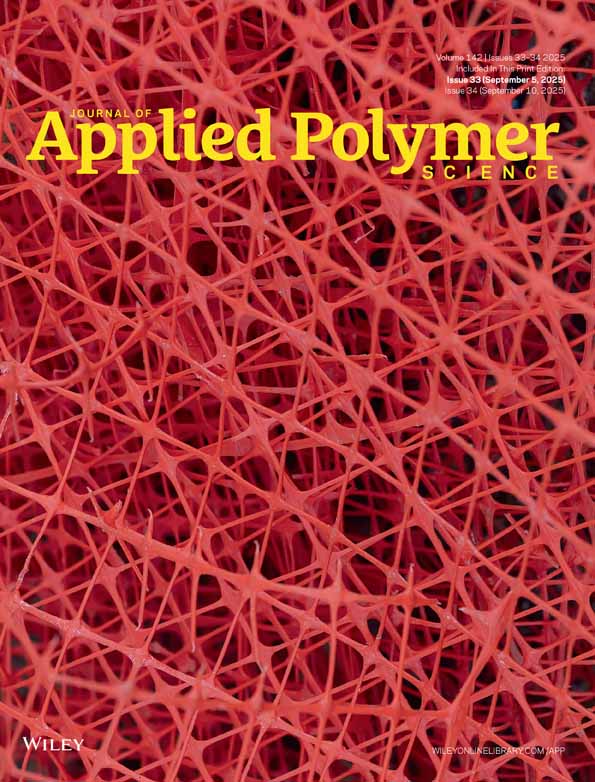Polypyrrole-carbon fiber composite film prepared by chemical oxidative polymerization of pyrrole
Abstract
Polypyrrole-carbon fiber (Ppy-CF) composite films with carbon fiber (CF) content ranging from 15 to 20 wt % have been prepared by chemical oxidative polymerization of pyrrole at the surface of a CF-covered Teflon substrate following a layer-by-layer deposition approach. The composites have a high modulus of 8–9 × 1010 dyn/cm2, high tensile strength of 200–270 kg/cm2, and good thermal stability. More importantly, these composite films showed electrochemical activity in their free-standing state. Thus, they can be used as the cathode material for rechargeable battery without conventional metallic or conducting glass sheet as the current collector. Here, carbon fibers act as an electrically conductive skeletal electrode for current collection. The charge capacity of the film with a thickness of 120 μm was tested to be 2.5 coulombs (C)/cm2 and a specific capacity of 91 mAh/g. © 1997 John Wiley & Sons, Inc. J Appl Polym Sci 64: 2149–2154, 1997




